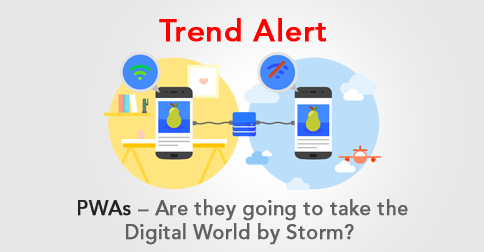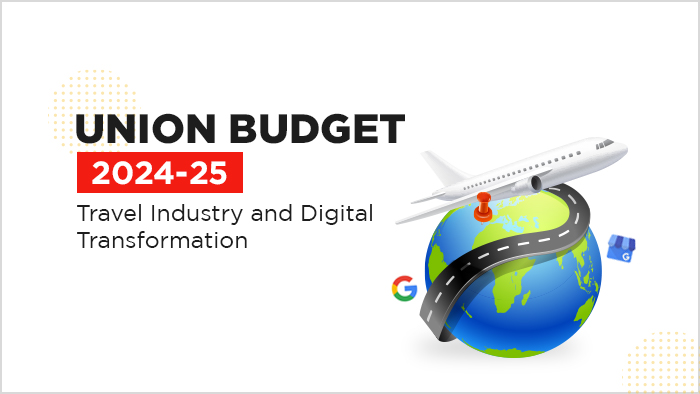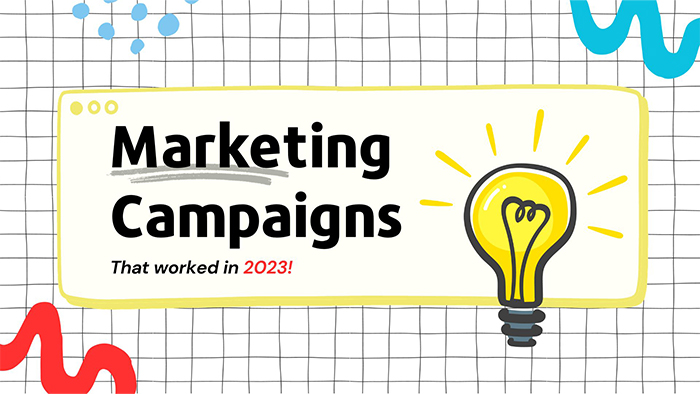‘Today if you ask a smartphone user whether they use mobile browser for visiting a website that they excessively use or use its native app’, it is likely that you will get the answer as – Native Application. It is because; native applications are reliable, load faster, enable you to work offline, have push notifications and come with home screen icon availability and so on. According to comScore Mobile Metrix, 87% of users spend most of their time in native apps than the rest 13% using mobile web. However, if they are again to be believed, the mobile web reach is 3 times more than apps but lacks engagement mainly due to the advantage and user experience that native apps provide.

Source- comScore Mobile Metrix, U.S
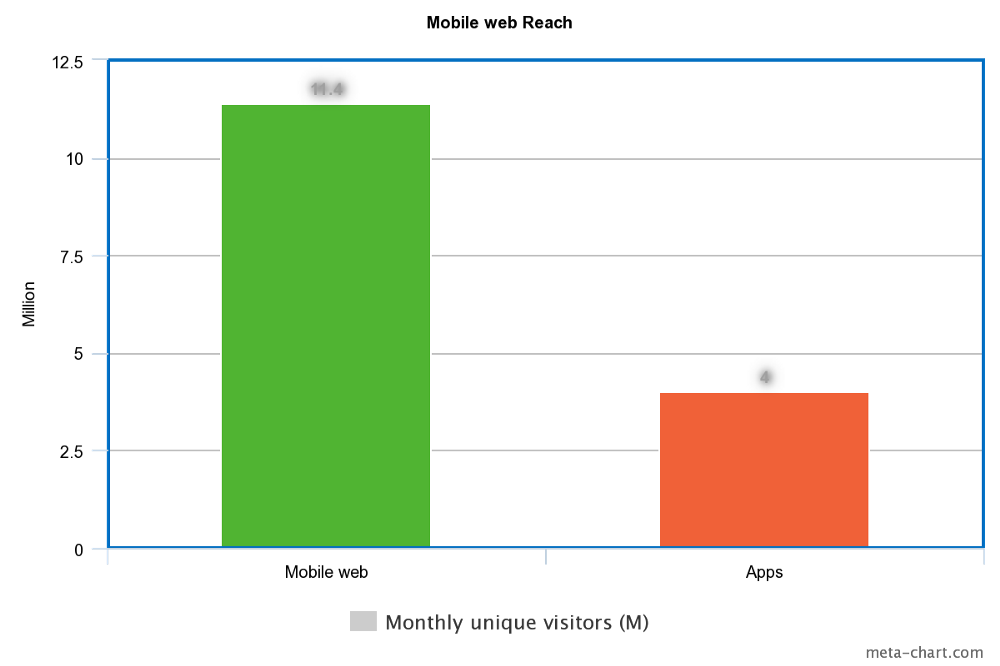
Source- comScore Mobile Metrix, U.S
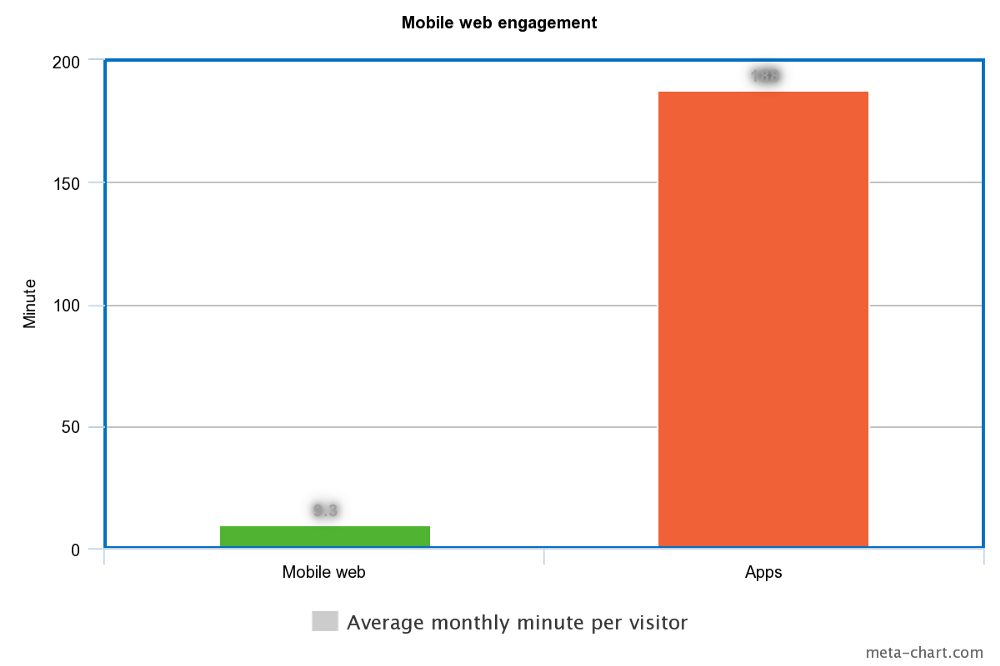
Source- comScore Mobile Metrix, U.S
As per a Google research, average load time of a mobile website is around 18-20 seconds, and a user wants the site to load within 3 seconds. That means a business loses around 40% of its users if the website is taking more than 3 seconds to load and 100% users if it fails to take more than 10 seconds. Moreover, mobile website doesn’t have the option of push notification.
Back in 2015, Google came out in public with some exciting buzz about the approach of app development and then in 2017 during the annual Google I/O all the buzz was put to an end as Google strongly promoted and talked about PWAs (Progressive Web App). The concept of PWAs was introduced to provide an experience combining the best of both website and native application. Initially when Google introduced PWAs, its competitors like Apple and Microsoft had also started supporting PWAs into their respective browsers to make sure their users have the most modern features even while using browsers than native apps. Let us help you understand what PWAs are.
PWAs (Progressive Web Applications) are basically applications within your browser that are displayed as website. You get an experience of application without installing an exclusive application from your Google Play Store or any App Store. Many companies such as, Starbucks, Tinder, Google Maps, Uber, Twitter Lite, Instagram and Pinterest are now rolling out their PWA adapted websites. They are capable of providing similar functionality and seamless user interface that you would usually find in the native apps. This shift in approach comes with some benefits for businesses and for individuals.
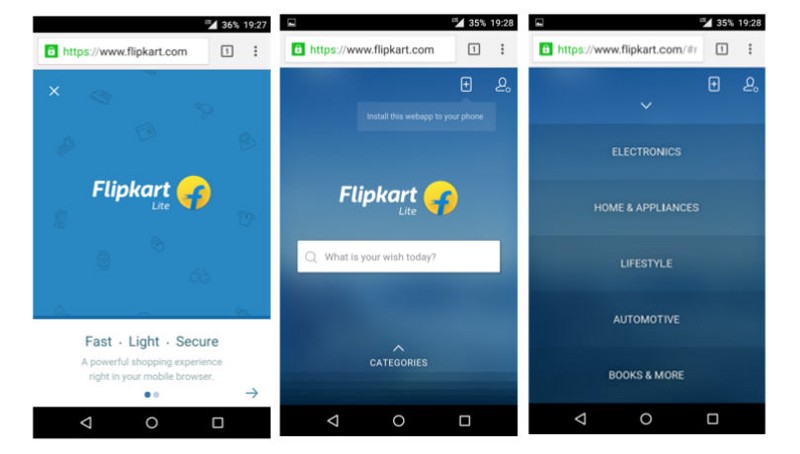
Are PWAs better than native apps?
There are majorly 3 promises that PWAs offer while working perfectly across all the platforms and devices. They are:-
- Maximizes the Reach – It helps a business quickly reach to users across all platforms with relatively less development effort.
- Fewer Clicks than the Native Apps – PWA doesn’t have to be downloaded and installed prior to the usage, makes it more comfortable for users to use it. As per some accounts each additional click required to get an app running, results in losing a user. The drop-off rate of the same is 20%.
- Seamless Inter-App Experience – One of the most irritating things of clickable links was that they would get redirected to the mobile browser and would start acting all fussy. But with PWAs coming, the app cross-functionality has vastly improved. It means that new users can effectively switch between apps and share anything without any problem.

Source- insanelab.com
Is it the end of Native Apps?
Not really. It is still too soon to be totally dependent on PWAs because native apps are the dominant force on the mobile platforms because of a very simple reason. Web experiences were simply not effectively adapted for them. In 2016, 87% of mobile internet traffic was accounted only through native applications. PWAs do offer wide range of benefits over native apps, but totally counting on them has still a long way to go.
Despite the stated benefits of PWAs, there are number of issues that need to be looked upon before they can claim to offer an unassailably superior alternative to native apps. PWAs have limited capabilities when we talk about integration with hardware features of a tablet or a smartphone. Hardware features like NFC, Bluetooth functionality and sensor package prevents PWAs from being developed for mobile accessories and let’s not forget our beloved ‘wearables’ like smart watches, fitness trackers and wireless earphones. Thus, Native apps still rule the mobile platform.
Conclusion
It is still not the right thing to say that native apps will continue to rule the mobile world for ever or that PWAs will kill them in the near future. But with the ever changing and improvising technologies coming out now and then, PWAs are still like an infant with challenges that need to be taken care of. Yet, they have the potential to create a shift in the mobile web world. What are your thoughts?
Looking forward to get a website or app built for your business? We’ve built websites and applications for some of the big brands in the country. Let’s connect – Call us on +91- 9810619956 or shoot a mail to deepak@finessse.digital

